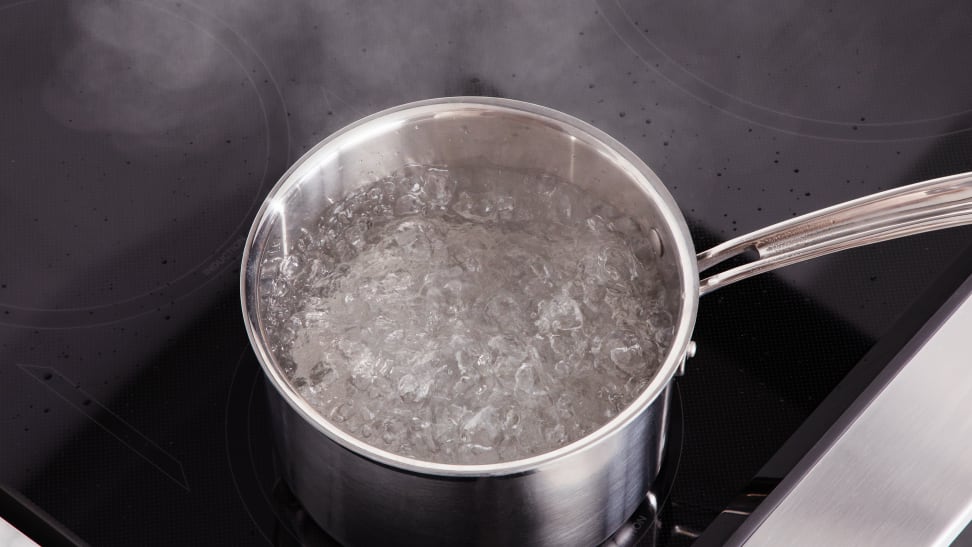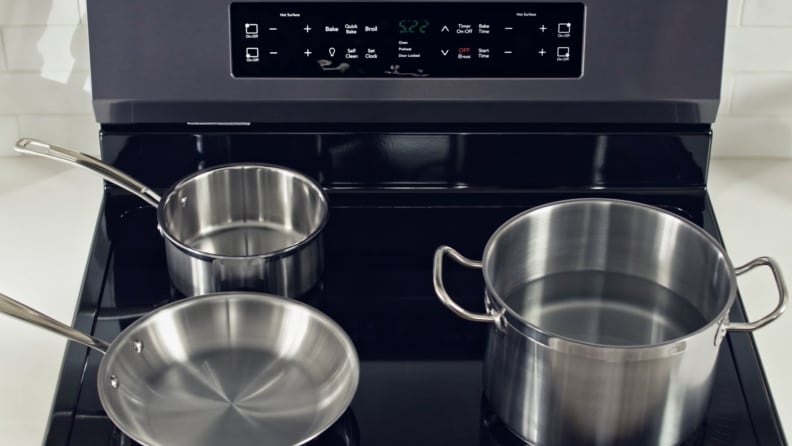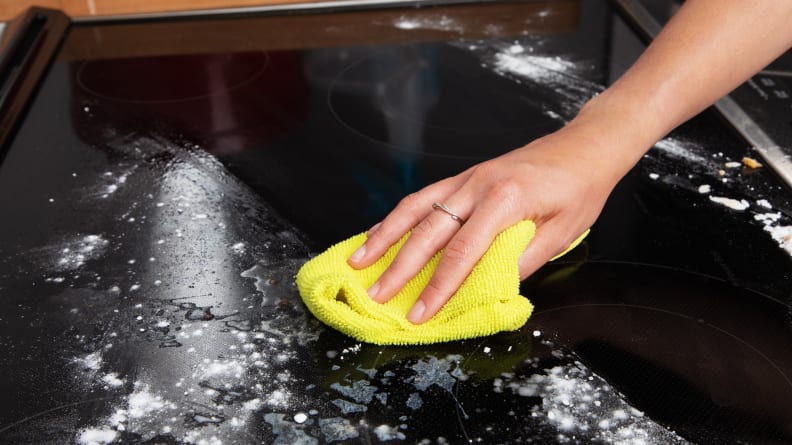Is induction cooking faster? 7 reasons why the answer is yes
It's the little things that add up to getting a faster meal on the table.
 Credit:
Reviewed / Timothy Renzi
Credit:
Reviewed / Timothy Renzi
Products are chosen independently by our editors. Purchases made through our links may earn us a commission.
Every few years, a new cooking trend hits. In the mid-2000s, we became immersed in sous vide cooking. Then, air fryers became popular (and stayed that way), and pressure cookers took home kitchens by storm.
But take it from us, the real game changer is induction cooking.
Some of the advantages of using an induction cooktop—safety, great temperature control, and easy cleanup—make it tempting to make the switch. And even if you haven't eyeballed our induction Q&A, you might have already heard that a pot of water boils twice as fast on an induction cooktop as on a gas or electric stove. So, what does all this mean in terms of cooking a speedy dinner?
Induction cooking saves the cook a lot of time. Here’s how.
1. Induction boils water faster

Water boils much more quickly on an induction range, so it saves time in the kitchen.
If you’re used to wasting your time waiting for a pasta pot to boil, induction eliminates that inconvenience. Water boils about twice as fast on an induction cooktop than it would on gas or traditional electric. That means you get to enjoy your linguine much faster.
2. It gets to the exact temperature you need—and stays there
Get friendly with the cooktop's controls—you'll be pleasantly surprised at how easy they are to use, and how precise they are. On an induction cooktop, you can melt chocolate at 110°F, or sear a steak at 450°F. Time savings come when you avoid over-cooking or under-cooking your food.
3. It reduces likelihood of burning (and having to start again)
When you turn on an induction burner, it heats up right away—forget about waiting around. And when you turn off the heat, it goes off immediately.
That’s a big advantage over standard electric burners, which stay hot to the touch for a while. With induction, you still have to keep an eye on the pan, but there’s less chance of overcooking your dinner, and having to start all over again.
4. It makes multitasking while cooking easier
If you dread cooking a multi-course meal because of all the juggling it takes to get everything ready, induction can come to the rescue.
You can save time by starting to cook every dish as soon as you finish prepping it. As the food in each pan is ready, there's no need schlepp it to the oven to keep it warm. Just turn the burner to the lowest setting to keep it warm right on the cooktop.
5. It lets you use any size pot or pan (for the most part)
This has some caveats and requires some explanation, but it's a good one. You may already be aware that induction cooktops work with many pots and pans, but not all. If a magnet sticks to it, it’s good to go on an induction cooktop.
Copper and aluminum cookware are problematic, though we found a great workaround solution even for those.
So if your pans are induction-friendly, you can take advantage of a feature called Auto-sizing Pan Detection found on most induction cooktops. It works by detecting the pan size and only activating the parts of the electromagnetic coil that are in contact with the pan—no wasted energy.
Even the more budget-friendly induction ranges we've tested offer this feature. There are also some induction cooktops—albeit more expensive ones—from Bosch and Samsung that have whole zones running the length of the cooking area. These allow even heating along oddly shaped pans or griddle pans, which on gas or electric might have to straddle two separate burners, creating hot and cool spots.
Imagine how much faster you can make evenly cooked pancakes if you didn't have to worry about those hot spots and cool spots.
6. Smart timers can adjust the burner temp automatically
A smart timer can also be a time saver. Smart induction cooktops allow you to turn a “burner” on or off, or change the temperature at a time you specify. This frees you up to set it and forget it. And if you forget to place the pan, the induction cooktop remains cool. Where there’s no metal pan, there’s no heat.
7. Clean up is faster

Use a microfiber cloth to clean your glass stove top.
Cleanup goes quickly on an induction cooktop. Since food is much less likely to burn onto the cool surface, a quick swipe with cooktop cleaner and a soft cloth makes it shine. We've got a whole article about how to clean a glass top stove.
There’s a learning curve associated with induction cooking, but don't be afraid to jump in. Using these tips, you'll be able to get a meal on the table faster than ever, clean up quickly, and get out of the kitchen.
More on induction cooking
- The Best Cookware Sets We've Tested for Induction
- Induction cooking—here's why you should make the switch
- Induction Cooking 101
- Will my pots and pans work with induction?
- How we test electric and induction ranges at Reviewed
- Hestan Cue Smart Cooking System review
- Don't Fear Induction, Say Professional Chefs
- The Best Induction Ranges We've Tested
- Induction Cooking FAQ: Here's what real people wanted to know
- Our Place's Perfect Pot: Is it as great as the Always Pan?
Still have questions? See our entire Induction 101 series and get answers.


